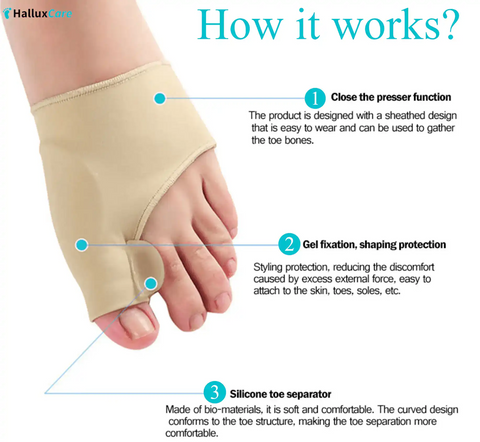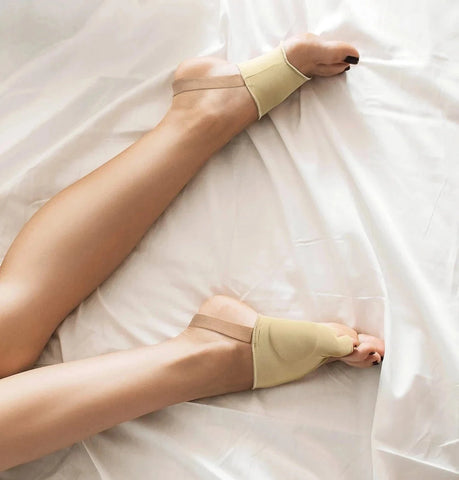Finding Hope After Bunion Surgery: Real Experiences, Recovery Tips, and Modern Relief
Last Updated: 2025-10-01
Author: Dr. Jamie Lee, DPM, Board-Certified Podiatrist
Bunion pain relief, bunion surgery recovery, and non-surgical bunion solutions are hot topics for anyone struggling with foot pain. If you’ve ever scrolled through online forums like Reddit, you’ve likely noticed a trend: people are more inclined to share their struggles than their successes. However, one recent comment on a Lapidus bunionectomy and toe shortening journey stood out—reminding us that positive outcomes are possible and worth sharing.
4.9 ⭐⭐⭐⭐⭐ ( 1843 reviews )
The Reality Behind Bunion Surgery Stories
Why Do Negative Stories Dominate?
- Human nature: We seek support during tough times, so more people post when in pain or anxious.
- Confirmation bias: Reading only about complications can make surgery recovery seem scarier than it is. According to Dr. David Porter, DPM, “Patients who do well are less likely to post online than those who struggle, skewing the perception of outcomes.”[1]
- Hope matters: Positive updates, like the one quoted above, offer much-needed balance and hope.
What is the Lapidus Procedure?
- Lapidus bunionectomy: A surgical correction of bunions by fusing the first metatarsal bone to the medial cuneiform.[2]
- Toe shortening: Sometimes performed alongside to realign the foot and reduce pain.
- Recovery: While initial weeks can be tough, many experience significant relief and improved foot function. Studies show satisfaction rates above 85% when performed by an experienced surgeon.[3]
Bunion Surgery Recovery: What to Expect
Typical Recovery Timeline
- First 2 weeks: Rest, elevation, and limited mobility. You’ll likely wear a surgical boot and avoid putting weight on your foot.[3]
- Weeks 3–6: Gradual increase in movement, possible transition to a surgical shoe.
- Months 2–6: Physical therapy, increased activity, and gradual return to normal footwear.
Tips for a Smoother Recovery
- Follow your surgeon’s advice: Adherence to post-op protocols directly impacts your outcome.[4]
- Stay positive: Remember, negative stories are only part of the picture.
- Seek support: Connect with others who’ve had successful outcomes for encouragement.
- Elevate and ice: Reduce swelling by elevating your foot and applying ice packs as recommended.
- Monitor for infection: Watch for redness, excessive swelling, fever, or drainage—report concerns promptly.
- Gradually resume activity: Start with gentle movements and physical therapy exercises prescribed for you.
Non-Surgical Bunion Pain Relief
While some cases require surgery, many people find bunion pain relief with non-invasive solutions. Consider these options, all supported by podiatric association guidelines:[5]
- Orthopedic bunion sleeves: Provide support, alignment, and comfort for daily wear.
- Ice therapy & anti-inflammatories: Reduce swelling and pain. NSAIDs like ibuprofen can help but consult your doctor first.
- Proper footwear: Choose wide, supportive shoes to minimize pressure.
- Physical therapy: Strengthens foot muscles and improves mobility.
- Orthotic inserts: Custom or over-the-counter orthotics can redistribute pressure and reduce symptoms.
Real Stories Matter: Sharing Your Journey
The Reddit commenter’s story reminds us of the importance of sharing both struggles and triumphs. Positive experiences can:
- Offer hope to those facing surgery or considering their options.
- Help balance the narrative and reduce anxiety for others.
- Encourage a supportive, engaged community.
Explore HalluxCare Bunion Solutions
If you're looking for relief from bunion pain, consider using the Orthopedic Bunion Pain Relief & Correction Sleeve, which provides support and helps to alleviate discomfort.
For additional protection, the Tailor's Bunion Bunionette Pain Relief Protection Sleeves are designed to offer comfort and protection for bunionette pain.
To nourish and soothe the skin around bunions, as well as to promote healthy hair, consider the Jamaica Black Castor Oil Soothing Oil. Known for its moisturizing and anti-inflammatory properties, it helps alleviate discomfort around bunions and supports hair growth and scalp health.
Key Takeaways
- Most people recover well after bunion surgery, especially with proper care and realistic expectations.
- Non-surgical bunion management (orthotics, sleeves, footwear) can provide significant symptom relief.
- Don’t let online negativity color your outlook—many positive stories go unshared.
- Consult a podiatrist to tailor treatment to your needs.
Practical Tips & Real-World Applications
- Document your recovery: Keeping a diary can help you track progress and remain positive.
- Ask about minimally invasive options: Some bunion surgeries now use smaller incisions and have faster recovery.
- Bring supportive footwear to appointments: Your doctor can recommend modifications or inserts that fit your lifestyle.
- Consider workplace adjustments: If you stand for long periods, discuss temporary accommodations with your employer during recovery.
Frequently Asked Questions (FAQs)
Q: How long does it take to fully recover from bunion surgery?
A: Most patients return to regular activities within 3–6 months, but full recovery—including swelling resolution—can take up to a year.[3]
Q: Are bunion sleeves effective?
A: While sleeves and orthotics do not “cure” bunions, they can significantly reduce pain and slow progression when used with proper footwear.[5]
Q: Is bunion surgery worth it?
A: For those with severe pain or deformity, surgery is often highly effective and improves quality of life. Discuss your unique risks and benefits with a board-certified podiatrist.[3]
Q: Can bunions come back after surgery?
A: Recurrence is possible, especially if post-op instructions are not followed, but the risk is low with proper care.[4]
Q: What are signs I should see a doctor about my bunion?
A: Persistent pain, rapid changes in the bunion shape, skin breakdown, or difficulty walking all warrant podiatric evaluation.
Join the Conversation!
Have you had bunion surgery or found relief with non-surgical methods? What advice or encouragement would you share with others just starting their journey? Tell us your story in the comments below—your experience could be the hope someone else needs today.
References
- Porter D, DPM. Patient perspectives after bunion surgery.
- American Academy of Orthopaedic Surgeons. Lapidus Procedure for Bunions.
- Coughlin MJ, Jones CP. Hallux valgus and first ray mobility. J Am Acad Orthop Surg. 2007;15(3):140-153.
- American Podiatric Medical Association. Bunion Surgery Recovery.
- American College of Foot and Ankle Surgeons. Non-Surgical Treatments for Bunions.




